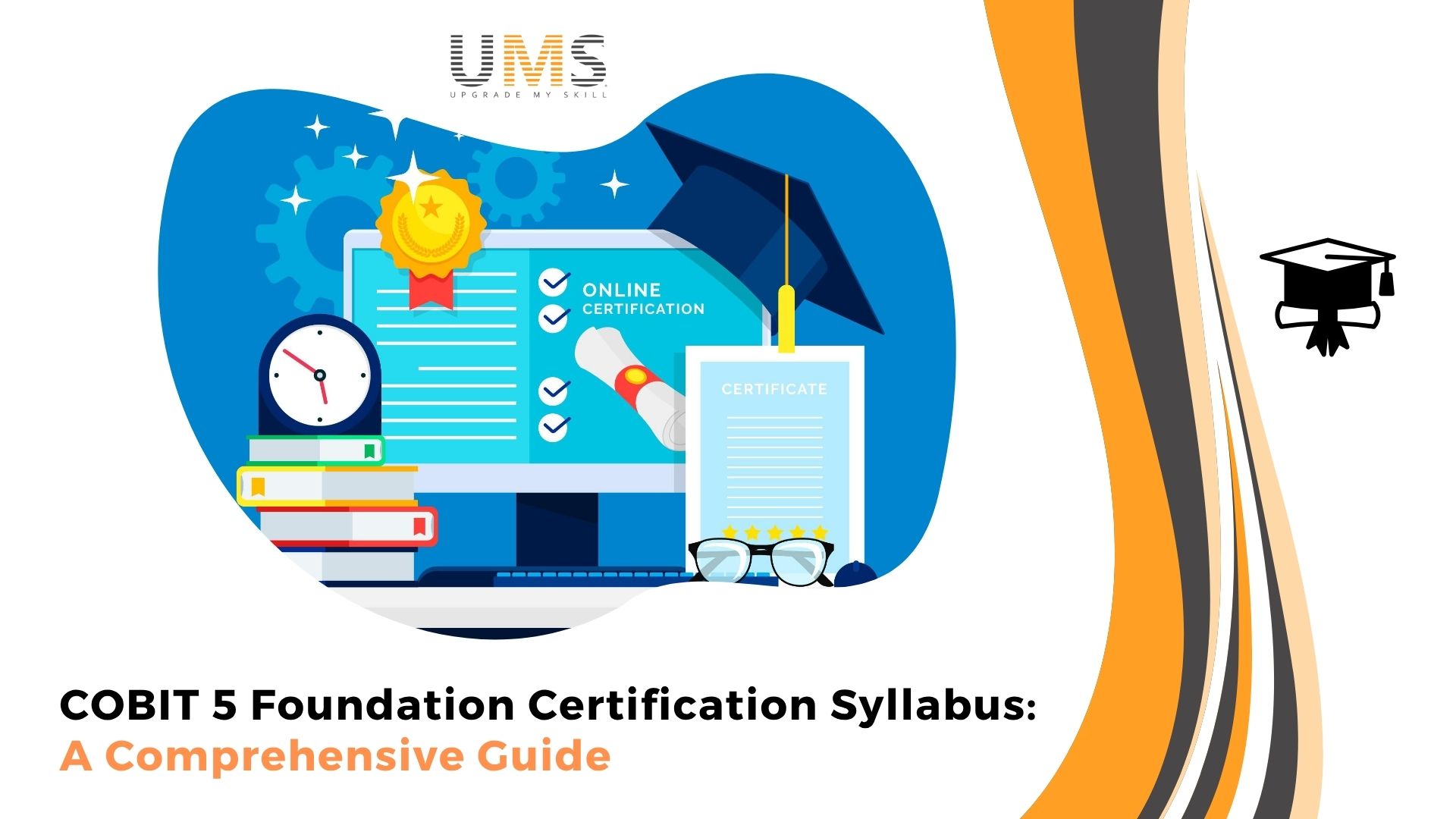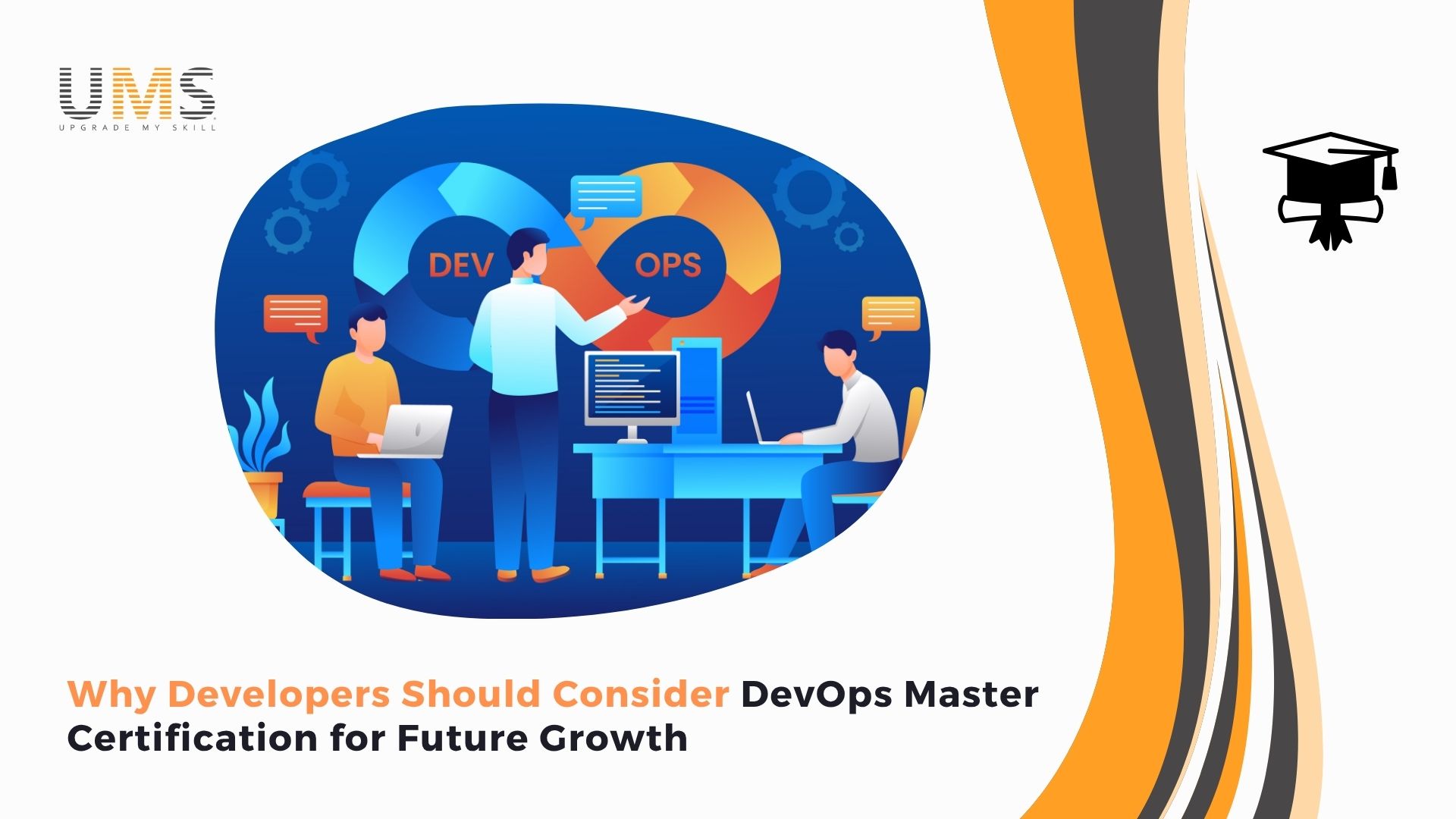- Posted By Admin
- Oct 17, 2025

In today’s fast-paced digital business environment, organizations face growing challenges in aligning IT processes with strategic business objectives. Effective governance of enterprise IT is no longer optional; it is essential for ensuring business growth, operational efficiency, and compliance with industry standards. The COBIT 5 Foundation Certification provides professionals with a strong grounding in IT governance and management principles, offering a globally recognized framework to achieve better outcomes.
This comprehensive guide explores the entire COBIT 5 Foundation Certification syllabus in detail, giving you a clear roadmap to prepare for the exam and advance your career.
COBIT 5 (Control Objectives for Information and Related Technology) is a framework created by ISACA that integrates governance and management practices for enterprise IT. It provides organizations with a structured approach to maximize IT value while minimizing risks and ensuring compliance with regulatory requirements. The COBIT 5 Foundation Certification validates your ability to understand and apply these practices in real-world contexts.
This certification is ideal for IT managers, auditors, consultants, governance professionals, and business leaders who need to align IT with enterprise goals. By earning this credential, you demonstrate your ability to link IT investments with business value, implement effective IT controls, and support compliance initiatives. The COBIT 5 Foundation is not just about passing an exam; it is about gaining a skillset that allows you to contribute to your organization’s success at a strategic level.
The COBIT 5 framework is built on a holistic foundation that bridges the gap between business goals and IT processes. It is designed to provide organizations with clear guidelines for governance, risk management, and resource optimization. Understanding the introduction section of COBIT 5 is essential because it lays the groundwork for everything that follows in the syllabus.
The framework is globally accepted, vendor-neutral, and adaptable across industries, making it relevant for businesses of all sizes. It explains how governance ensures accountability, while management focuses on execution and achieving results. Organizations that adopt COBIT 5 often find improved decision-making, higher return on IT investments, and better alignment between technology and business outcomes.
At the heart of COBIT 5 are five key principles that serve as the backbone of IT governance. These principles include meeting stakeholder needs, covering the enterprise end-to-end, applying a single integrated framework, enabling a holistic approach, and distinguishing between governance and management. Each principle plays a critical role in shaping how Stakeholders is governed in an organization.
For instance, meeting stakeholder needs ensures that IT delivers measurable value aligned with business priorities. Covering the enterprise end-to-end broadens governance beyond IT to include all business processes influenced by technology. The holistic approach integrates processes, culture, and people into one system of governance. By applying these principles, organizations ensure they maximize IT value, minimize risks, and maintain a competitive edge in the digital economy.
A major component of the syllabus involves learning about the seven enablers of COBIT 5, which act as key drivers for effective governance. These enablers are principles, policies and frameworks; processes; organizational structures; culture, ethics and behavior; information; services, infrastructure and applications; and people, skills and competencies. Each enabler plays a role in creating an ecosystem that supports governance and management practices.
For example, processes provide structured steps to achieve IT goals, while organizational structures define roles and responsibilities to ensure accountability. Culture, ethics, and behavior shape how people within the organization adopt governance practices. Meanwhile, information serves as the foundation for decision-making, and IT services, applications, and infrastructure support business activities. Without skilled people and a strong culture of ethics, the other enablers cannot function effectively. Together, these enablers form the backbone of COBIT 5.
The COBIT 5 Process Capability Model (PCM) helps organizations assess the maturity and performance of their IT processes. It provides a structured method for evaluating how well processes are designed, implemented, and managed. This assessment is critical because it identifies both strengths and weaknesses, enabling organizations to implement targeted improvements.
The PCM defines six capability levels, ranging from Level 0 (Incomplete Process) to Level 5 (Optimizing Process). These levels measure how consistently a process achieves its goals, whether it is repeatable, predictable, or capable of continuous improvement. For organizations, this model acts as a roadmap for improving IT governance maturity. It ensures that processes evolve systematically, delivering higher efficiency, reduced risks, and measurable value to stakeholders.
One of the most important aspects of COBIT 5 is the clear distinction it makes between governance and management. Governance refers to the activities of evaluating stakeholder needs, setting direction, and monitoring performance. It ensures accountability at the highest levels of the organization. Management, on the other hand, focuses on planning, building, running, and monitoring IT-related activities in line with governance directions.
By separating these two domains, COBIT 5 ensures clarity of roles and responsibilities across the organization. This distinction reduces confusion, eliminates overlaps, and ensures accountability at both strategic and operational levels. For professionals, mastering this concept is crucial because it shows how governance decisions translate into management execution. Ultimately, this separation enhances transparency and ensures business objectives are consistently supported by IT activities.
The true strength of COBIT 5 lies in its practical application across industries. Organizations use it to manage IT-related risks, optimize resources, and ensure compliance with laws and regulations. By applying COBIT 5, businesses can establish effective risk management strategies, ensuring IT initiatives do not expose the organization to unnecessary threats.
In addition, COBIT 5 helps companies optimize their resources by ensuring people, infrastructure, and technology are used efficiently. The framework also provides strong support for compliance by aligning IT practices with international standards and regulatory requirements. Furthermore, COBIT 5 introduces effective performance measurement practices, enabling organizations to track IT’s contribution to business outcomes using KPIs. This ensures IT not only supports business goals but also drives measurable value.
The COBIT 5 Foundation exam tests your understanding of the framework’s principles, enablers, processes, and real-world applications. It is typically structured as a multiple-choice exam, with questions designed to test both theoretical knowledge and practical understanding. Candidates must be familiar with the five principles, seven enablers, process capability model, and governance-management distinction to succeed.
While prior experience in IT governance or auditing is helpful, it is not mandatory. However, hands-on exposure to IT processes and governance practices makes preparation easier. Candidates should study COBIT 5 publications, attempt practice exams, and enroll in professional training programs. Structured learning not only enhances exam readiness but also ensures you gain the skills needed to apply COBIT 5 effectively in your career.
The COBIT 5 Foundation Certification is a globally respected credential that validates your ability to govern and manage enterprise IT effectively. By mastering the syllabus—covering principles, enablers, governance, management, and practical application—you position yourself as a professional who can bridge the gap between business goals and IT capabilities. Organizations are constantly seeking experts who can ensure IT delivers value while controlling risks, and this certification helps you step into that role with confidence.
At Upgrade My Skill, we provide industry-recognized COBIT 5 Foundation Certification Training designed by experienced professionals. Our training covers all aspects of the syllabus in detail and equips you with practical knowledge through hands-on sessions. By learning from experts, you gain real-world insights that go beyond theory and prepare you to succeed in the certification exam.
Enroll today to take the next step in your IT governance journey and gain a globally respected COBIT 5 certification that opens new career opportunities.

DevOps Professional Certification empowers team leads with leadership, automation, collaboration, and data-driven decision-m...

DevOps Master Certification helps developers build full-cycle delivery skills, automate workflows, master cloud and CI/CD, in...

DevOps doesn’t require prior technical experience. Beginners can start by learning basics like Git, Linux, cloud, and automat...